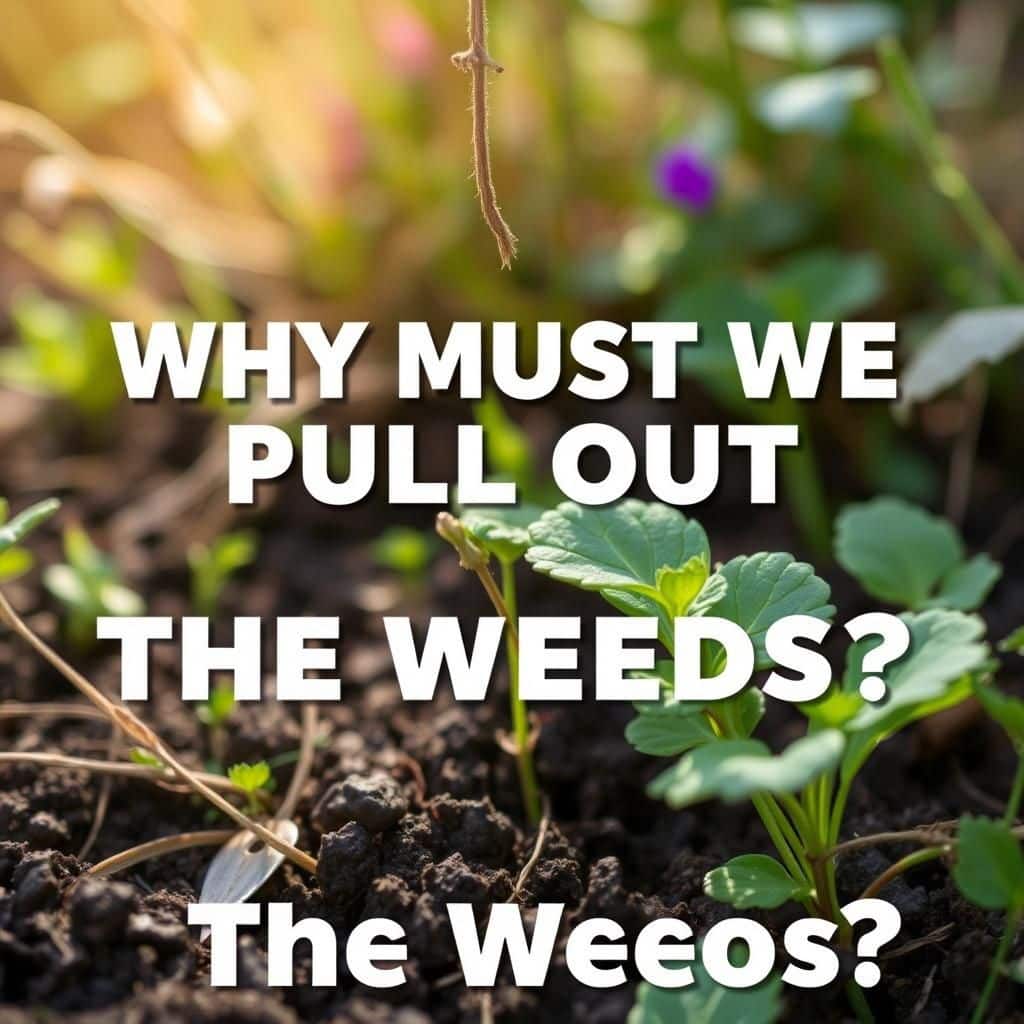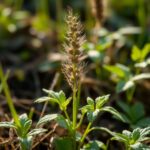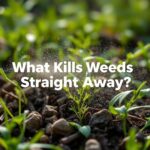Why Must We Pull Out the Weeds? Essential Reasons for a Healthy Garden

A healthy garden is a reflection of careful planning and dedicated maintenance. One crucial aspect of garden care that often goes overlooked is weeding. Weeds, which compete with your desired plants for essential resources, can quickly become a gardener's worst nightmare. Understanding the importance of removing these unwanted intruders is vital for promoting healthy growth and enhancing the overall aesthetics of your garden. In this article, we will explore the essential reasons why pulling out weeds is necessary, including their impact on plant health, soil quality, and pest control, ultimately guiding you toward a flourishing and vibrant garden.
Why Is It Crucial to Remove Weeds?
Pulling out weeds is essential for maintaining a healthy garden or landscape, as these unwanted plants compete with your desired flora for essential resources such as water, nutrients, and sunlight. Weeds often grow faster and more aggressively than cultivated plants, which can inhibit their growth and diminish their vitality. Moreover, certain types of weeds may harbor pests and diseases that can spread to your plants, while others can alter the soil composition in ways that could be detrimental to crop health. Thus, regular removal of weeds is a fundamental practice for ensuring that your garden thrives.
Understanding Weeds and Their Impact
Weeds are defined as any plant that is considered undesirable in a particular setting, typically because they grow in competition with cultivated plants. Their impact on gardens and farms can be profound, as they can significantly reduce soil quality, interfere with air circulation, and limit sunlight availability for other plants. The presence of weeds can also lead to increased water usage, as they often draw moisture from the soil, making it more difficult for your plants to access the hydration they require.
Effective Weed Control Strategies
Implementing effective weed control strategies is vital for preserving plant health. Common methods include manual removal, mulching, and the use of herbicides. Manual removal involves physically pulling weeds from the soil, ensuring that roots are completely extracted to prevent regrowth. Mulching not only suppresses weed growth by blocking sunlight but also helps retain soil moisture and improves soil quality. Herbicides can be effective, but they should be used carefully to prevent damage to surrounding plants and to minimize environmental impact.
The Role of Soil Health in Weed Management
Soil health plays a critical role in weed management. A well-balanced soil enriched with organic matter tends to support a diverse ecosystem of beneficial plants and microorganisms that can outcompete weeds. Regular soil testing and amendments can enhance the fertility of the soil, promoting stronger plants that are better equipped to withstand weed pressure. By fostering soil health, gardeners can create a more resilient environment that naturally diminishes the presence of aggressive weed species.
See also:
Weeds as Indicators of Soil Problems
Interestingly, the types of weeds that appear in a garden can provide insight into underlying soil problems. For example, the presence of certain weeds may indicate nutrient deficiencies, poor drainage, or soil compaction. By paying attention to what types of weeds thrive in specific areas, gardeners can diagnose and address these issues, leading to improved cultivation practices. Understanding the weed types can also guide the choice of strategies to bolster the health of your plants.
Environmental Impact of Weeds
The environmental impact of weeds extends beyond just competition with cultivated plants. Some invasive weed species can disrupt local ecosystems, outcompeting native plants and altering habitats for local wildlife. This displacement can lead to decreased biodiversity and diminished resilience in ecosystems, highlighting the importance of effective weed management not just for gardens but for natural areas as well. By controlling weeds, we help preserve the balance of local ecosystems.
| Weed Type | Impact on Plants | Control Method |
|---|---|---|
| Dandelion | Competes for nutrients | Manual removal, herbicide |
| Clover | Can be beneficial but may spread | Mulching, overseeding |
| Thistle | Invasive, alters soil health | Targeted herbicide, manual removal |
| Crabgrass | Competes for sunlight | Pre-emergent herbicide, mowing |
| Bindweed | Twines around plants, damages structure | Persistent manual removal |
The Importance of Weeding for Plant Health
Weeding is a crucial task in gardening that significantly impacts the overall health and vitality of your plants. Weeds compete with garden plants for essential resources such as sunlight, water, and nutrients, which can stunt the growth of desired vegetables, flowers, and herbs. By regularly removing these unwanted plants, gardeners can ensure that their cultivated species have optimal access to the resources they need to thrive. Additionally, the presence of weeds can create a habitat for pests and diseases, further jeopardizing the well-being of your garden. Through diligent weeding practices, a gardener not only enhances plant production but also fosters a more balanced and resilient garden ecosystem.
Understanding Weed Competition
Weeds often occupy the same niche as cultivated plants, effectively competing for vital nutrients, water, and light. This competition can become particularly acute during the early stages of plant growth when resources are already scarce. By removing weeds, gardeners can minimize the strain on their crops, allowing them to flourish without the pressure of competing flora. Furthermore, different weeds have varying survival strategies, making them formidable opponents in the race for resources, so identifying and managing them promptly is essential for successful gardening.
Preventing Pest Infestations
Weeds can inadvertently serve as a breeding ground for various pests that may harm garden plants. Many insects find refuge in the dense foliage of weeds, making it easier for them to invade cultivated beds. By maintaining a weed-free garden, gardeners can significantly reduce the likelihood of pest infestations and, in turn, protect their prized plants. Moreover, certain weeds attract pests away from desirable plants, but this can also lead to overshadowing vital crops and should be managed via regular weeding to maintain a healthy balance.
See also:
Encouraging Healthy Soil
Weeds often disrupt the structure and integrity of garden soil, leading to erosion and nutrient depletion. By regularly removing weeds, gardeners can enhance soil health by promoting better air circulation and moisture retention in the soil. A weed-free environment assists in maintaining fertility and pH balance, supporting the growth of cultivated plants. Practices such as mulching after weeding can further improve soil condition, leading to a sustainable gardening environment.
Improving Aesthetics
An aesthetically pleasing garden significantly enhances enjoyment for gardeners and visitors alike. Weeds can create a chaotic and unkempt appearance, detracting from the beauty of cultivated plants. By prioritizing weeding, gardeners can maintain a clean, organized look that showcases the vibrant colors and shapes of their flowers and vegetables. A tidy garden not only feels more welcoming but also reflects the effort and care put into maintaining it, fostering a greater sense of pride in gardening accomplishments.
Enhancing Plant Productivity
Weeds can significantly hinder the yield of garden crops by drawing away nutrients and water, resulting in stunted growth and poor fruit production. By employing diligent weeding techniques, gardeners can enhance plant productivity, ensuring that their plants receive the light, nutrients, and water required for optimal growth. This increased productivity leads to better harvests and a more satisfying gardening experience, allowing for a more abundant supply of vegetables, herbs, and flowers throughout the growing season.
Questions from Our Readers
Why are weeds harmful to gardens?
Weeds compete with your plants for nutrients, water, and light, which can stunt their growth and reduce crop yields. By pulling out these unwanted plants, you help ensure that your desired plants receive the resources they need to thrive.
How do weeds affect soil health?
Many weeds can alter the structure and composition of the soil, leading to decreased fertility over time. Removing weeds not only helps maintain a healthy balance in the soil but also encourages the growth of beneficial microorganisms.
See also:
What are some benefits of removing weeds regularly?
Regularly pulling out weeds can improve the aesthetics of your garden or landscape, as well as prevent the spread of pests and diseases that often thrive in overgrown areas. A well-maintained garden can lead to a more productive and thriving ecosystem.
Can weeds attract unwanted pests?
Yes, weeds can serve as a host for various pests and insects that may infest your garden. By removing weeds, you reduce the likelihood of these unwanted species settling in and harming your plants.

If you want to read more articles like Why Must We Pull Out the Weeds? Essential Reasons for a Healthy Garden, we recommend you check out our Weeds category.
Leave a Reply
Related Articles